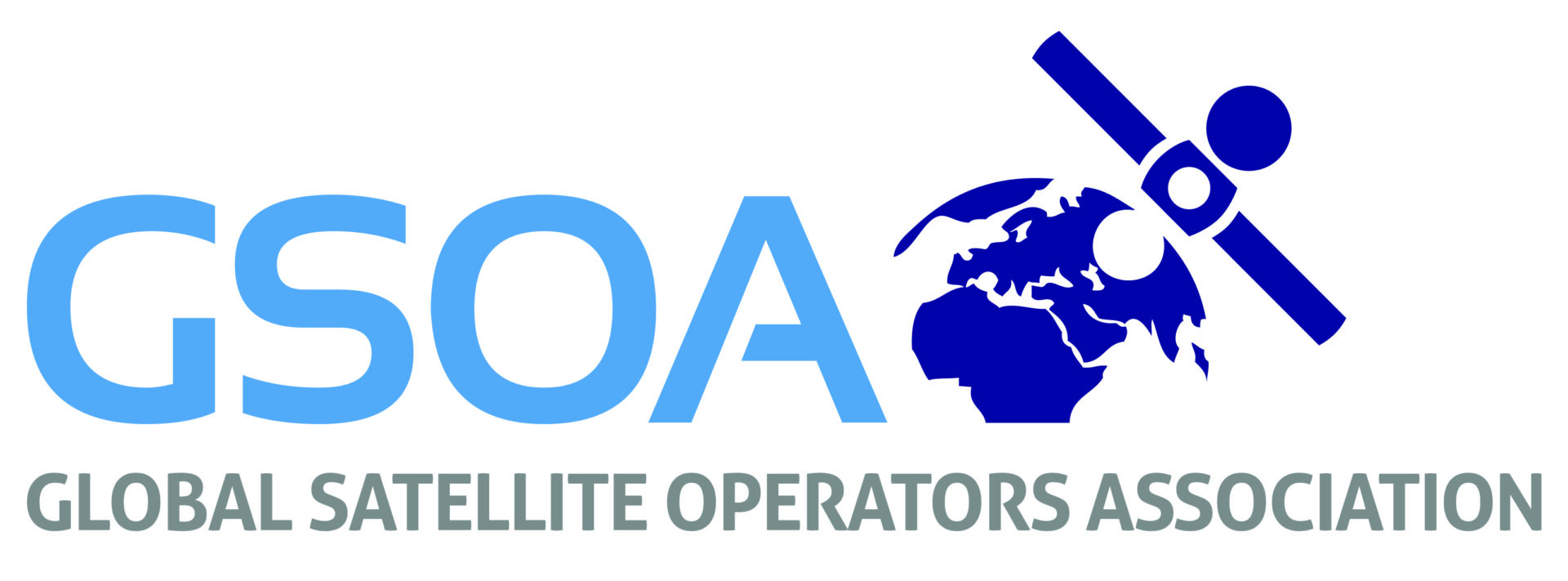Satellite Industry Trends: A Year to Remember, A Year Ahead

Joining us for the reflections and expectations of ‘Satellite Industry Trends: A Year to Remember, A Year Ahead’ were experts from a diverse group of industry members from Kymeta, OneWeb, Speedcast, and ST Engineering iDirect. Our panellists’ analyses and insights began with their describing their top event of 2021, and respective expected/predicted major event for 2022.
Going on to examine a range of key “buzz words” and “buzz topics”, moderator Stéphane Chenard of Euroconsult began with inviting an exploration of the significance for satellite of COP-26 – the United Nations Climate Change Conference 2021 held in Glasgow recently – citing climate change as being recognised as a background factor to everyday operations for at least some of the satellite industry’s user market verticals.
Other “buzz topics” included the impact of interest rates on the industry; problems with supply chains with particular reference to semiconductors/’chips’; changes in commodity prices; the future of the seeming plethora of megaconstellations; the evolving application of software definition in satellites, ground segment, and in the broad arena of network infrastructure; cyber; and, 5G.
Even with 75-minutes of dialogue there was insufficient time to address all questions from the live audience, so on this page we will be featuring the panellist’s written responses to those outstanding questions. If you were not among the 235 people registered from 57 countries for this event, please do enjoy the recording.
See you in 2022 when the GVF Webinar Series will resume.
Q & A continued….
The following question was posed through the chat function during the panel but we ran out of time to respond in the live programme. Thank you to our audience for taking an active part by asking questions, and to our panellists for their time to answer them after the webinar ended…
1. Do you see other major tech giants such as Google, Microsoft, or Meta joining in developing major constellations?
David Fotheringham (Kymeta): I don’t see Google or Microsoft entering the mega constellation operations as historically they have not been a services operator (small exception for Google Fi, but they’re an MVNO). Meta (Facebook) already divested (to some extent) their play in this segment to Amazon. You can read more about it here.
2. How critical will the ability of ground segment to communicate with satellites in GEO, MEO and LEO constellations simultaneously? Will applications be limited to operating on either GEO, MEO or LEO or will there be applications that will utilise satellites in different orbits via inter satellite links?
David Fotheringham (Kymeta): From a user terminal perspective – first, operating with non-GSO satellites will require a tracking antenna or antennas. Second, Antennas are designed and built to operate in a single band, so you’d have to think of this as Ku or Ka-band constellations. Third, the antenna’s performance and the amplifier, more specifically, will impact which orbits the user terminal can close the link. Meaning a user terminal with a tracking antenna can work with a LEO but may not be able to close the link to a GEO; however, a GEO user terminal should have the gain and performance to close a link to MEO and LEO. Fourth, the RF chain and modem will need to support both constellations and allow switching between the various constellations. Plus, you’d need a subscription or services procured on each network as most networks are siloed today by different operators, and interoperability will require more complex management of multiple constellation service contracts.
We expect lower-cost user terminals to be possible for LEO-only constellations and more premium terminal products to support multi-orbit interoperation. We also have a recently issued patent for a dual-beam design that would allow simultaneous operation on multiple constellations. These more complex systems will be of high value to defense markets.
ISLs will improve the ability to backhaul data so long as the operators of the respective spacecraft have the right equipment and configure the satellites to allow such interoperability. With ISL, information will move more rapidly around the world and not be as dependent on the terrestrial fiber network.
I think application sensitivity to orbits will focus more on throughput, latency, stability, and availability. If we, the satellite industry, are successful, the user will not have to think about how any of this works, and instead, they get to enjoy it and are delighted by the experience. The how should become opaquer for most users; it will ultimately just be internet.
Jo De Loor (ST Engineering iDirect): Selection of the preferred orbit, whether that is GEO or NGSO, will be driven by the application and other considerations such as throughput, latency, service level agreement (SLA), cost, and location. NGSO and GEO satellites may also complement each other across coverage areas. Additionally, reliable NGSO services require a large clear visible sky due to the movement of LEO and MEO satellites, while for GEO this is easier to achieve due to their synchronicity with the earth.
Some operators are already providing multi-orbit services, such as SES with the combination of their GEO and O3b mPOWER MEO fleet. At the end of 2020, SES partnered with ST Engineering iDirect to provide the high performance ground segment technology that will be necessary to facilitate their services.
We are currently in the process of shipping the all new MDM5010 VSAT modem, a multi-orbit enabled high performant modem that achieves an aggregate speed of 800Mbps, making it the industry’s fastest satellite modem today for shared bandwidth capacity networks. This will satisfy very high throughput requirements in markets such as cruise, trunking and cellular backhaul. The same MDM5010 can also achieve up to 1.6 Gbps throughput in SCPC mode.
In the future, we envisage modems that are further virtualized, with software defined functions that allow even more versatile operations across different constellations that support such open environment.
Similarly, antenna system suppliers are already shipping NGSO compatible antennas, both tracking parabolic and flat panel antennas (FPAs), enabling customers to take advantage of multi-orbit services when they come available.
3. What do you think of the projects and start-up constellations of a direct transmission from LEO satellite to a mobile user smartphone? Not naming specific companies, but in general – is this a disruptive technology, or a very niche product?
David Fotheringham (Kymeta): It will depend. If the throughput and reliability are sufficient and the cost is not a blocker, it will be highly disruptive. If the service throughput is too limited or the prices are too high, the service will be niche. Right now, we’re seeing a lot of noise and promotion on power points, POCs, and limited demonstration of the technology. Operationalizing and scaling these services will be proof of if there is a viable business there. There are many lessons learned from Iridium that we should be conscious of as we watch these companies evolve.
My expectation is the realized benefit will exist, but the attach rate and utility will be more limited than currently imaged for the foreseeable future. It is easy to imagine bulk multicast messages delivered from space to all phones. This would help for emergency alerts and other critical communications, plus possible alternatives to current GNSS systems.
4. Hello, I am from an aviation company, here connectivity is still far behind, we are looking for some solution in the nearly future, is there any solution planned. OneWeb and SpaceX did announce some plans, but how realistic are they and how long will it take to be applicable in a reliable way?
David Fotheringham (Kymeta): The aviation market has been a leading segment for satellite mobility. New technologies introduced and new networks will continue to support and expand the services available in the air. The time to market will always lag due to the regulatory scrutiny products are rightly subjected to ensure safety. I would expect to see LEO and LEO/GEO on aero starting in the next couple of years and expanding after that. Companies looking to deploy these solutions should be engaged with industry now if they want to be early adopters.
5. What are the updates between WIMAX and C-Band satellite network? Do we see the future of Satellite where Fiber optic and WIMAX is highly used?
David Fotheringham (Kymeta):WiMAX has a relatively limited market presence and is due for replacement in middle mile backhaul solutions. The trend is towards more fiber backhaul to the teleports and ground stations as a service with on-premises data centers to support further virtualization of the network core.
6. 280 Mhz of C-band worth >90B in the US auction when used for cellular services. Satellite will always lose that argument. Satellite generate less value. Getting deeper in to 3GPP may have the effect that MNOs see even more opportunities to take spectrum away. MNOs interests are rarely aligned with satellite industry…
David Fotheringham (Kymeta): Having watched the broadcast industry be highly compressed and displaced by not evolving and adopting technology fast enough, nor allowed by the regulators until it was essentially too late, there isn’t much of an in-or-out decision to be made here. We’re not going to all agree on standards expeditiously, and it is going to be evolutionary. In that process, it is important where there are common standards to be derived, technology transferred that can benefit the satellite industry; or, economies of scale to benefit the creation of next-generation infrastructure and equipment. We should be at the table and active in the creation of those standards. It may not be advantageous to satellite, so we need to be at the table to defend our position. We also need to expand/develop meaningful industry working group(s) and standards bodies to collaborate and adopt solutions that benefit the satellite industry.
